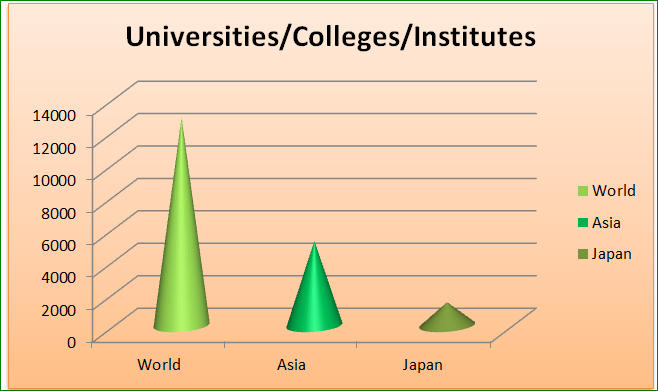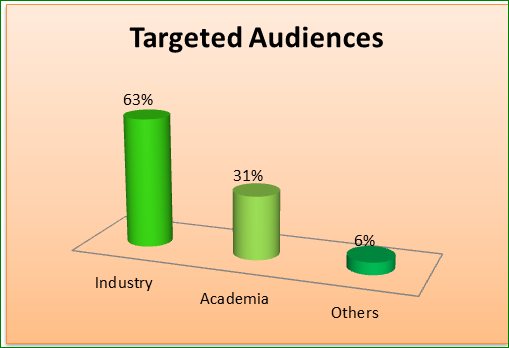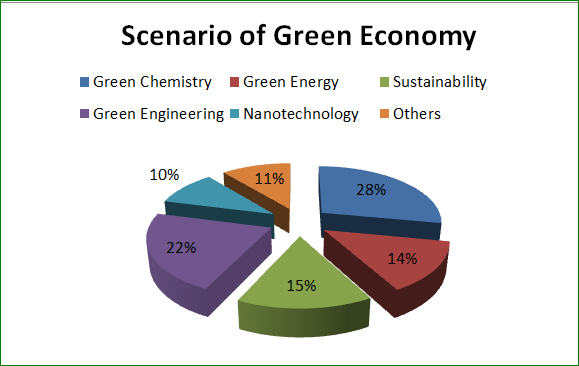
Green Chem 2018

Theme: A Paradigm towards a sustainable Green pavement
Greenchemistry 2018 cordially invites all the participants across the globe to attend “Annual Global Experts Meet on GreenChemistry & Engineering” scheduled on November 26-27, 2018 at Paris, France which includes prompt Keynote presentations, Oral presentations, Poster presentations, and Exhibitions.This Conference will concentrate on the theme "A Paradigm towards a sustainable Green Pavement”. Green Chemistry Meeting will cluster the togetherness of key decision makers and innovators in this rapidly growing field. The insight of this 2-Day program is to rigidify meticulously on various formulations of Green concepts relating to both Chemistry and Engineering point of view.

By-Prof. Nicolas Abatzoglou
Chair Pfizer
Director GRTP-C&P
Canada
Dear All,
On behalf of the organizing committee, it is with great enthusiasm that I am addressing to all of you my warmest welcome to this Conference on Green Chemistry & Engineering.
The adoption and use of the term “Green” by nearly all fields of the human activities is relatively recent. Although the term was already used to indicate a more environmentally-friendly way to do things as a consequence of the sustainable development imperative, its generalized utilization comes in the nineties. Thus, all scientific and technical/technological endeavours towards sustainability are nowadays qualified as “Green”. Green chemistry and engineering are playing a role of paramount importance in this direction.
We are convinced that the importance of the topics covered by this conference will attract a high number of important “players’ in this area who will guarantee the successful presentation and future adoption of new paradigms towards the targeted sustainability.
Being myself a humble contributor in this field, I am eager to meet you and exchange with all participants on these matters of great importance for our future.
Track 1: Green Chemistry
Green Chemistry has harnessed the Environmental Technology and Science to a subsequent level of advancement that merely discerned with the 12 principles targeted on it. This focusses on the imploration of evaluating authentic catalytic reagents and fusing some safe solvents and auxiliaries regarded as green solvents for the betterment of the ambiance. It is also concerned with the after effects and so to rip out the abnormalities it considers the synthesis of less hazardous chemicals and derivative reduction to deliver the environment an energy efficient process. The yearn of researchers is to figure out all the possible means to evince a successful green environment by inheriting all the principles of Green Chemistry.
Track 2: Green Nanotechnology
The synthesis of green Nano-materials and items refer the non- hurting nature or human wellbeing prospects that eradicate many ecological issues at low temperatures utilizing less vitality and resources sources wherever conceivable, emphasizing on numerous lifecycles for subjecting these to stupendous development in environment. Green nanotechnology implies utilizing nanotechnology to make advance robust items and materials of zero-valent metals, metal oxides, and salts creating a benign ambiance through remediation and treatment of water. Nano scale impetuses compound to response more effective and less inefficient leading to the introduction of certain sustainable nano-coatings to discard the absurd effects of paints and other emulsions to respective things. It can also evaluate the technology in the production of solar cells.
Track 3: Green Innovative Trends
The trend in green innovations opens up a thick glaze towards a sustainable achievement of an environment changing the phases of human civilization and that of the earth. The scientists and industries are pinching efforts to carry out many bewitching innovative criteria to upgrade with the principles of Green Chemistry and Green Engineering. Some of these innovations fall into the climate changes and enhancing the prodigious gist of Supercritical Carbon Dioxide as an environmentally benign medium for sustainable chemical synthesis. There are other ways of bestowing innovates to the land of Green Environment such as producing organic batteries for sustainable energy storage to evade critical clogs through toxic effects of inorganic batteries and bases to render a beneficial deal to the ambiance through microwave energy.
Track 4: Green Analytical methodologies
Analytical methodologies are subjected to controlling and justification of green chemistry thereby becoming an efficient tool for conformation of the green result of a chemical product or technology. These are strategic or scientific techniques that reckon the inherent composition of a specimen. However, these methodologies might hinder in the prolific status of costs which now should be look after to minimize. The development of instrumental methods in Analytical Chemistry led to the replacement of wet chemistry in sample preparation and treatment. The outcome obtained is related to an increase in reliability, higher precision and time management which substantially directs reduction of waste. Chromatography and Spectrometry deal with the matured separation approaches which can be easily miniaturized indicating the decrements in size of the samples, low consumption, higher selectivity and faster rate of analysis. Supercritical fluids can undergo continuum mobile phase properties by the separation techniques of Spectrometry emphasizing on the chemical constitutes. Immunoassay techniques are widely evaluated in pharmaceutical analysis for diagnosing diseases, therapeutic monitoring of drugs, and clinical pharmacokinetic and bioequivalence studies in drug discovery for use in pharmaceutical industries. Surface analysis techniques mainly involves the characterization of materials and its potential to register in the development of chemistry.
Track 5: Green Catalytic modulations
The ultimate aim of catalysis in Green Chemistry and Engineering is to reduce waste associated with use of materials and energy in a given process in consonance with principles of Green Chemistry and Engineering. These green catalysts in order to replicate a green concept, the studies are heading with solid acids and bases where the compatible properties of a solid with respect to acids and basis analysis can be inferred and can be further categorized to fuse the aggregates of Green engineering in dyestuff technology to eliminate harmful toxicants that reveal inappropriate health. In pursuit of rectifying the harmful chemical reactions, catalytic reaction engineering and scale-up can be holistically performed to understand the kinetics and the potential of the catalysts on the reaction rate. Catalytic membrane reactors may be rendered to Green evolution through the concept behind the transport phenomena to redefine the effectiveness and stability of catalysis.
Track 6: Industrial Green Chemistry
This particular track drags the proceedings of Green Chemistry principles in an industry point of view. Pharmaceutical companies can make robust green drugs which will almost pacify the situation of reductions causing hazards to public health and therefore should be prominent in selecting less hazardous reagents, reducing reaction steps, and developing better catalysts. Biochemical and biopolymers are biological derivatives that create less deduction in the ecology. Biotechnology produces chemicals and products through biological transformations of bio-based and renewable materials to promote advancement in the economy. Textile Science and Clothing Technology can also be intensified in terms of 12 assessed principles of green chemistry. Textile materials can possess an environmentally friendly processing, including fiber production, dyes and auxiliaries, solvents which can be optimized and efficient in chemical recycling, water treatment and bio-processing leading to the elimination of hazardous chemicals and recycling of textile materials creating sustainability.
The global industrial market for Green Chemistry was depicted around 51.7 billion U.S. dollars, and it is forecasted to be some around 85.6 billion U.S. dollars that by 2020
Track 7: Green Engineering policies
Green Engineering implements the design, commercialization and use of processes and products that are viable and economical evacuating the risk to human health and the environment and generation of pollution at the root following the distinctive principles given by Sandestin. It encompasses various other disciplines like green biotechnology, green chemical engineering, pharmaceutical science and environmental friendly practices to render sustainability elevating a protection to the biosphere. This policy keenly designates the conservative and durability ethics of energy and resources. To contribute to the green environment there should be unique observation in the integration of materials and energy flows to find loopholes in avoiding the chronic consequences.Green genetic engineering trails with the production of plants by introducing trans genes, foreign to the species into which they are introduced. Green genetic engineering is used in agriculture and the food industries creating new species of plants that are highly resistant to pests and contain higher levels of nutrients than plants of traditional inherits.
The Green Engineering trait is expected to touch the peak of USD 12 Billion by 2021, at a CAGR of 10.2% between 2016 and 2021. The growth will be solely attributed to the increasing demands of features relevant to the recent enhancements in technologies.
Track 8: Sustainable Material Management
The materials force people to look carefully at all aspects of the material life cycle that comprise industrial practices and consumer habits. The material lifecycle is the onset of scrapping or harvesting of raw materials which are transported and processed to create the products and services that drive our society and finally destined to validate resources and environmental sustainability. These are distributed, consumed, reused or recycled, and ultimately disposed. The main aim of this management is to degrade the environmental impacts caused by the deviant extracts of hazardous materials for sustainable development. So, to control and monitor these steps are to be forwarded for managing imperil materials. Green Building Technology is a picturesque of design and construction of buildings of high performance structures that also meet certain standards for reducing natural resource consumption.
The worldwide market for green materials management has grown from $116 billion in 2013 and expected to raise more than $254 billion in 2020, according to a report from Navigant Research.
Track 9: Green Energy Prospects
Green Energy reflects the unbound use of renewable energy sources that deliver negligible impact on the greenhouse gas emissions. The power generated from these sources is free from unwanted weeds of disturbance to ecology. Green power technology involves the joining technology of both biology and chemistry to build up a track in the generation of power with cost effective and minimize the emissions of CO2.Alternative solutions for efficiency includes the efficacy of consumption of energies that can be substituted for highly consumed sources.Bio-based materials and products prelude a holistic environment that eradicates the sole of ill impacts.
Track 10: Waste Management Strategies
The wastages cause a tragic base to the environment that keeps on accumulating in abundance and therefore to retreat and manage these issues, administration policy should pioneer some steps ahead to recede the squandering of wastages for ecological benefits. Waste management, on the other hand is deluged with boundary conditions such as costs, logistics, legislations & guidelines, storage, safety targets and the existing technologies on sites, so need to identify the prominent solutions for waste prevention by various aspects of process design before delivering for a production after management. Biological waste treatment directs to the management of waste through biological solutions that prelude a genuine green environment. Some other ways of waste management may be discussed through thermal treatment, disposal of wastes-Dumps and Landfills. Electric waste management/E-waste helps in terminating the hazardous electric wastages by computing a green technology.
Track 11:Green Biofuels and Energy
Biomass delivers a renewable source of energy that trails the joints of many bio-derived resources and utilization is done based on the purpose, availability and demands. This can create a fruitful basement in agriculture. Biofuels can also be generated through biomass conversion that can take leadership in the development of sustainable energy by refining biodiesel and other relevant fuels for use in automotive. Oilfields and essential oils can also be merged with the concept of green chemistry and engineering by relying on their characteristic properties and then processing to sustainable applications. Green gas can mitigate the critical situations of pollution and development in the field of geosciences through accompanying the energy sources with more versatile biodegradable but less environmentally harmful materials.
A new market research finds that the biofuels market was valued at $168.18 billion in 2016 and is projected to reach $246.52 billion by 2024 globally at a CAGR of 4.92%
Track 12: Sustainable resources exploitation
The exploitation of natural resources in abundance leads to a terrific growth in economy and other ecological feedstock. The modest way of profiling a green field weighs on the 3 R’s policies of management viz. Reduce, Reuse & Recycle and then processing with the benchmark steps to retain sustainability and achieving the goodness of environmental and ethical assessments through the follow ups of green connotations. Metals supplied for reuse and from mineral sources are more feasible than those from mines. Recycling or reusing doesn’t prefer the destruction of indigenous constitutes. Archaeologists are trying to expertise on the re-establishment of common habitats to emerge a fluke in mining. Re-treatment of a used metal is essentially a simpler way to recognize the potential of its coherency than extracting the metal from the used source and reused metals are less expensive in nature.
Track 13:Green Process Formulations
Green Processing & Synthesis (GPS) is dedicated in general to innovative and green process development and chemical synthesis covering: Sustainable & Green Chemistry Flow Chemistry. The chemical manufacturing processes create a strategic pavement in an organization to build up a network of competitive advantages and improvement in performances. However with rapid deteriorations in technology the needs of the society are constantly transforming and evolving thereby creating a distraction to the environment. These sort of undesired critics can be solved by green synthetic processes that transform the status of the ambiance without any delay or harsh implements.Green technology can also incorporate many process intensification techniques to evaluate the dwelling of an advanced society of green development.
Track 14: Greening Industrial Applications
The industrial applications can be transformed to green by petrifying the processes with respect to the principles of Green Chemistry and Engineering. These processes can be deciphered green only if the level of formation are limited to clean aspects and management of the toxic chemicals before these link with further tragic residuals.
Track 15: Green Chemistry Metrics
Green chemistry metrics deals with measuring aspects of a chemical process linking to the principles of green chemistry which is served for the quantification of the efficiency or environmental performance of the processes encountered and then allowing the changes in performance to be measured if it complies with the prospects of green evolution. Atom-economy balance refers measuring of the atoms that were wasted when making a chemical. The higher the atom economy, the 'greener' the process it happens. Chemical exposure should be profiled with high defined uses that can be uniquely involved in creating a green society and should strive to optimize environmental contamination to reduce energy and maintenance costs and to avoid catastrophic downtime and costly repairs.
Track 16: Green Technologies in Food Production and Food Processing
Green food production regularly proposes natural cultivating hones a couple of hundreds of years back. This sort of cultivating utilizes a little region of land for crops and another zone for touching meat, sheep, and goat. Homestead elements were quite often independent with no utilization of pesticides or herbicides and the main compost utilized was fertilizer. Natural cultivating suits the idea of a green innovation. Essential, auxiliary, and tertiary handling strategies are found to change crude create into esteem included nourishments and fixings. Essential preparing strategies, for example, cleaning, evaluating, dehulling, arranging, and processing are utilized as starting advance in handling the majority of the grains. A standout amongst the most encouraging innovative ways to deal with diminish natural impression in nourishment handling is the utilization of proteins. As organic impetuses, proteins accelerates response rates and results in investment funds as far as time, vitality, and cost. Nourishment chemicals give favorable circumstances as far as specificity, affectability, their relative non-harmfulness, high action at low fixations, and simplicity of inactivation. Enzymatic methodologies involve milder medicines as well as gentle response conditions, in this way are more ecological inviting and would secure the earth better contrasted with customary strategies.
Significance & Scope
GreenChem meet 2018 discerns on the holistic prospects of Green Chemistry and Engineering that delivers subsidiaries to an unique conjugation of the innovative research on the development of Green Technology and Sustainability. This meet is followed by the stack of publications and discussions indulged with the versatile field of Green Chemistry and Engineering. The main insight of GreenChem is to petrify the recent researches carried upon the field of Chemistry, Engineering disciplines and various other Environmental studies for the Green Economy and Ecological Balance. It unveils every nook and corner of ecosystem to get the breakthrough in the development of Green phase and eventually a sustainable bondage.
This meeting is a multidisciplinary gathering and presents the most needed strategies such as synthesis in the level of chemistry to render green evolution, certain engineering policies to upgrade the advancement in green technology and environmental friendly dome. Each session of the meeting will be incorporated with expert lectures, posters and discussions by the scientists, professors, researchers and students eminence in the field of Green Chemistry and Engineering joining in the forum to design sustainable processes, prolific green world staged with innovations advancement in the business and human health protection. We are grateful to invite you on behalf of organizing committee to join us and lead a decision for the future of GreenChem.
About Venue:
Tokyo is the imperial capital of Japan known as Tokyo Metropolis, one of the world’s most densely populated cities combining the elements of a city and a prefecture. There are more than 35 million residents in Tokyo that makes it largest and busiest metropolitan area in the world. Tokyo is regarded as one of the fascinating cities where the latest trends and the oldest traditions meeting together. “Eastern Capital” is the translation for the name Tokyo.
The Tokyo Skytree is regarded as the tallest free-standing tower in the world that measures 634m. The observation deck is considered to be the world’s highest skywalk and offers panoramic views of the city. The cherry blossom garden is glazed as the national symbol of Japan. These trees bloom for one or two weeks a year starting in the month of April. This period is known as Hanami, the long standing tradition of welcoming spring festival for admiring the contemplative beauty of nature. Shinjuku station is the largest and busiest railway station in the world with an average of about 3.70 million passengers to pass through the station each day. Tokyo has more Michelin stars than any other city in the world with neon signs that makes a trademark of the streets full of neon lights. The city is also nurtured with various museums, gardens, Mount Fuji, the Imperial palace and many more authentic attractions that creates a blissful picturesque of the city. Vending machines are incredibly popular in Tokyo at a distance of 12 meters and those sell from foods to toiletries. Another identifiable landmark in Tokyo is the Shibuya Crossing where about 2,500 people crossing at one time. The Harajuku neighborhood is renowned as the gist of Tokyo’s teen fashion and Japanese street fashion. Tokyo is one of the best shopping destinations in the world where tourists can take advantage of tax free shopping which is available at licensed stores when making purchases. Tokyo's subway is famous as one of the busiest in the world where millions of people use the subway and railway daily. Above all these mentions it is one of the safest cities to travel as crimes against tourists are extremely rare and has one of the lowest crime rates per capita of any major cities in the world.
Why to Attend?
GreenChem meet 2018 is reflected upon the flow grades of Green Chemistry and Engineering
• Professionals, Researchers and Students would be clustered together to emulsify about the most recent new era advancements in Green Planet.
• Events would be incorporated with intrigued signals of development in Green Technologies and Green Economy by the tremendous sessions/tracks taken over by experts.
• Chances of meeting the Objective Business partners from and around the Globe focused on the trends of Green Chemistry and Engineering and refill an opportunity to accomplish the greatest accumulation of individuals on a particular concern.
• Reap the best outcomes from the experts, quenching the thirst of curiosity level and spreading the unique essence of the concerned fields in Green Chemistry and Engineering are the bases of this GreenChem meet 2018.
Target Audience:
- Chemistry Professionals/Researchers
- Chemical Engineering Professionals/Researchers
- Environmental Studies
- Materials Scientists/Research Professors
- Junior/Senior research fellows of Materials Science/ Nanotechnology/ Polymer Science
- Material science / Nanotechnology / Polymer/ Chemical Companies
- Material science / Chemistry, Chemical Engineering and Bio-based Associations
- Advanced Materials and Nanotechnology Engineers
- Physicists/Chemists
- Biotechnology, Bimolecular, Pharmaceutics
Societies/Industries/Universities Associated with Green Chemistry and Engineering around the globe:-
Societies and Associations
· American Chemical Society
· American Institute of Chemical Engineers(AIChE)
· American Institute of Chemists(AIC)
· Canadian Society for Chemical Technology (CSCT)
· Belgian Society of Biochemistry and Molecular Biology
· Biochemical Society
· American Oil Chemists' Society
· American Society of Brewing Chemists
· Association of Analytical Communities (AOAC International)
· Association of Greek Chemists
· Chemical Institute of Canada (CIC)
· Chemical Society Located in Taipei (CSLT)
· Chemical Society of Japan
· Chinese-American Chemical Society
· Chinese Chemical Society (Beijing) (CCS)
· Chinese Chemical Society (Taipei) (CSLT)
· Council for Chemical Research (CCR)
· Chemical Research Society of India
· Danish Chemical Society
· European Association for Chemical and Molecular Sciences
· Federation of European Biochemical Societies
· Indian Chemical Society
· Japan Association for International Chemical Information
· Swedish Chemical Society
· International Union of Pure and Applied Chemistry (IUPAC)
· Royal Society of Chemistry (RSC)
· Indian Institute of Chemical Engineers
· Israel Institute of Chemical Engineers
· Society of Chemical Engineers, Japan (SCEJ)
· Federation of Asian Chemical Societies
GreenChem Commerce Council/Companies/Industries
· 3M
· ACS Green Chemistry Institute
· Acticell GmbH
· Advancing Green Chemistry
· Aequor, Inc.
· AkzoNobel Inc.
· Amyris
· BASF Corporation
· Behr Paint
· Beiersdorf AG
· Bemis Associates
· Berkeley Center for Green Chemistry
· Beyond Benign
· BioAmber Inc.
· Bioindustrial Innovation Canada
· Center for Biorenewable Chemicals
· Center for Environmental Health
· Pfizer
· Green Biologics Inc.
· Green Electronics Council
· Green Futures Unlimited
· Green Seal, Inc.
· GreenBlue
· GreenCentre Canada
· Greening Our Children
· Grow Bioplastics
· Environmental and Public Health Consulting
· Environmental Defense Fund
· Environmental Protection Agency many more
Universities/Institutes/Colleges
· Yale University
· University of Kansas
· University of Michigan
· Indiana University
· University of Washington
· University of Wisconsin-Madison
· Notre Dame University
· Washington and Lee University
· Vanderbilt University
· University of Louisville
· Cornell University
· Arizona State University
· University of Massachusetts Lowell
· University of Tulane
· University of Georgia
· University of Connecticut
· Purdue University
· California Institute of Technology
· University of Illinois
· Texas A&M University
· University of Oregon
· Carnegie Mellon University
· University of California, Berkeley
· University of California Santa Barbara
· University of Texas
· The California Institute of Technology
· University of Minnesota
· University of Louisville
· University of Alberta
· University of Northern British Columbia
· Imperial College of London
· Keele University
· University of Bristol
· University of Birmingham
· Princeton University
· University of Saskatchewan
· Youngstown State University
· The University of York
· University of Bath
· University Park Nottingham
· University of Luneburg
· McGill University
· The University of Tokyo
· Nagoya University
· Waseda University
· Chubu University
· Tohoku University
· Tokyo Institute of Technology
· Shizuoka University
· Kyushu University
· Yokohama National University
· Kyoto University
· Osaka University
· Hokkaido University
· Monash University
· The University of Sydney
· University of Melbourne
· University of New South Wales
· Curtin University
· Tel Aviv University
· Hebrew University of Jerusalem
· Technion-Israel Institute of Technology
· Bar-Ilan University
· Ben-Gurion University
· Budapest University of Technology and Economics
· University of Cairo
· Pharos University in Alexandria
· Sohag University
· Aristotle University of Thessaloniki
· University of Patras
· University of Energy and Natural Resources
· Curtin University
· University Sains Malaysia
· University of Malaya
· University of Putra
· University of Kebangsaan
· Eskisehir Osmangazi University
· Bilkent University Turkey
· City University of Hong Kong
· University of Hong Kong
· The Chinese University of Hong Kong
· Peking University
· Tsinghua University
· Tongji University
· Asian Institute of Technology
· Mahidol University
Major Scopes for Green Chemistry and Engineering in Japan:
Societies/Associations
· Society of Chemical Engineers, Japan
· Chemical Society of Japan
· Japan Association for International Chemical Information
· The Japan Society for Analytical Chemistry
· Japan Oil Chemists' Society
Universities/Institutes/Colleges
· The University of Tokyo
· Nagoya University
· Waseda University
· Chubu University
· Tohoku University
· Tokyo Institute of Technology
· Shizuoka University
· Kyushu University
· Yokohama National University
· Kyoto University
· Osaka University
· Hokkaido University
· Hiroshima University
· Kanazawa University
· Keio University
Target Audience:
Industry 63%
Academia 31%
Others 6%
Figure 1: Targeted Audience

Figure 2: Statistical Analysis of Universities/Colleges/Institutes on Green Chemistry and Engineering Expertise
Market Value on Green Chemistry and Engineering Research:-
Green chemistry is a boon of principles that are utilized to reduce or eliminate the use or generation of hazardous substances in the design, manufacture, and application of chemical products. Green chemistry coupled with Engineering arrays creates a prerogative band of sustainability and ecological balances with the development of economy. Green engineering is the dome of design, commercialization and use of processes and products which are feasible and economical, minimizing the generation of pollution and reduce risk to human health and the environment. This band of Green Chemistry and Engineering ranges from dangerous to production processes of wastages that mitigate the atrocities of the world globalization to represent a Green Globe. The field of green chemistry has emerged from the interaction and constitutes of industry, government, and academia in the early 1990s. One prime milestone was the passage in the United States of the Pollution Prevention Act of 1990, which sought to broaden the emphasis of regulation from cleaning up pollution that had already been emitted to changing industrial practices and processes to prevent or minimize the rate of pollution. In 1991, the U.S. Environmental Protection Agency (EPA) declared the elimination of pollution at its source as one of its objectives. EPA's efforts to expedite this adoption of revolutionary and diverse discipline have led to significant environmental benefits, innovations and a strengthened economy. The evolution of the green chem market is being driven by conjugation of technical, regulatory, consumer preference, and economic factors. Improved chemical screening technology and advances in the science of mechanistic toxicology have improved the understanding of the effects of synthetic chemicals on humans, animals, and the environment. The rapid advancement in the field of biotechnology achieved over the last several decades have created powerful, new toolkits for the manipulation of organisms (bacteria, yeasts, and algae) such that they produce industrially useful compounds with great efficiency and minimal waste. The greatest deal for Green Chemistry and Engineering is an outburst opportunity from near-term positive financial and environmental impact coming from waste minimizing improvements to existing, conventional chemical production processes. California has registered to amend the policies of Green Chemistry and Engineering by taking an initiative to render the market facilitates by the following ways-
· Expand Pollution Prevention
· Develop Green Chemistry Workforce Education and Training, Research and Development and Technology Transfer
· Create an Online Product Ingredient Network
· Create an Online Toxics Clearinghouse
· Accelerate the Quest for Safer Products
· Move Toward a Cradle-to-Cradle Economy
Source of References:
https://www.dtsc.ca.gov/PollutionPrevention/GreenChemistryInitiative/upload/GREEN_Chem.pdf http://www.greenchemistryandcommerce.org/assets/media/images/Publications/Advancing-Green-Chemistry- Report-15-June-2015.pdf
http://www.navigantresearch.com/wp-content/uploads/2011/06/GCHEM-11-Executive-Summary.pdf
Market Growth of Green Chemistry and Engineering Research in the last and upcoming ten years:
The current scenario of the green chemical industry is approximately striking at $2.8 billion worldwide. It is more likely to grow about $11.0 billion in 2015 and nearly $100 billion in 2020. These estimates could be dramatically affected to the downside by other significant reversal in the world economy, or to the upside by drastic increase in the price of petroleum. Similarly, the North American market for "green chemistry" is projected to grow from $3 billion to over $20 billion during the same period as per discussed by Pike Research. The market opportunity of Green Chemistry and Engineering is underscored by the growing number of chemical companies reporting that their customers are expressing an interest in sustainable chemistry — rising from 57 percent in 2009 to 62 percent in 2014.
Figure 3: Graphical Analysis of Sales of Greener Alternatives over the past five years


Figure 4: Green Chemical Market by Region, World Markets from- 2011-2020 (Source: http://www.navigantresearch.com/wp-content/uploads/2011/06/GCHEM-11-Executive-Summary.pdf)
Figure 5: Green Economy grades as per current Globalization
Funds offered for the expansion of Green Chemistry and Engineering:
· ACS Petroleum Research Fund
· EPA’s funds for- Academic Research, Small Business and Innovative Projects
· ARB(Air Resources Board)
· Green Chemistry and Commerce Council
Market Reports of Green Chemistry and Engineering:
ü The global green and bio polyols market was valued at USD 2.63 Billion in 2015 and is projected to reach USD 4.71 Billion by 2021, at a CAGR of 9.5% from 2016 to 2021. The market size in terms of volume was 1.16 Million tons in 2015 and is projected to reach 1.74 Million tons by 2021, at a CAGR of 6.9% from 2016 to 2021
ü The biodiesel market is projected to reach USD 41.18 Billion by 2021, at a CAGR of 3.8% from 2016 to 2021.
ü The global bio-plastics & biopolymers market is projected to witness a CAGR of 12.0% from 2016 to reach a market size of USD 5.08 Billion by 2021.
ü The market size of green chelates/natural chelating agents is projected to reach USD 2.45 Billion by 2021, registering a CAGR of 5.74% between 2016 and 2021.
ü The market size, in terms of value, of green & bio-solvents is estimated to be about USD 5.58 Billion in 2015 and is projected to reach USD 8.17 Billion by 2020, at a CAGR of 7.94% between 2015 and 2020. The green & bio-solvents market, along with its applications, witnessed a moderate-to-high growth in the past few years and is likely to continue so in the in the coming years.
ü The global renewable chemicals market is estimated to be USD 49.0 billion in 2015 and is projected to reach USD 84.3 billion by 2020, at a CAGR of 11.47% between 2015 and 2020.
PS: http://www.marketsandmarkets.com/green-chemicals-market-research-101.html
- Green Chemistry
- Green Nanotechnology
- Green Innovative Trends
- Green Analytical methodologies
- Green Catalytic modulations
- Industrial Green Chemistry
- Green Engineering policies
- Sustainable Material Management
- Green Energy Prospects
- Waste Management Strategies
- Green Biofuels and Energy
- Sustainable resources exploitation
- Green Process Formulations
- Greening Industrial Applications
- Green Technologies in Food Production & Food Processing
- Green Chemistry Metrics
- Journal of Chemistry and Applied Chemical Engineering
- Journal of Biochemical Engineering & Bioprocess Technology
- Journal of Nanomaterials & Molecular Nanotechnology







































































































































